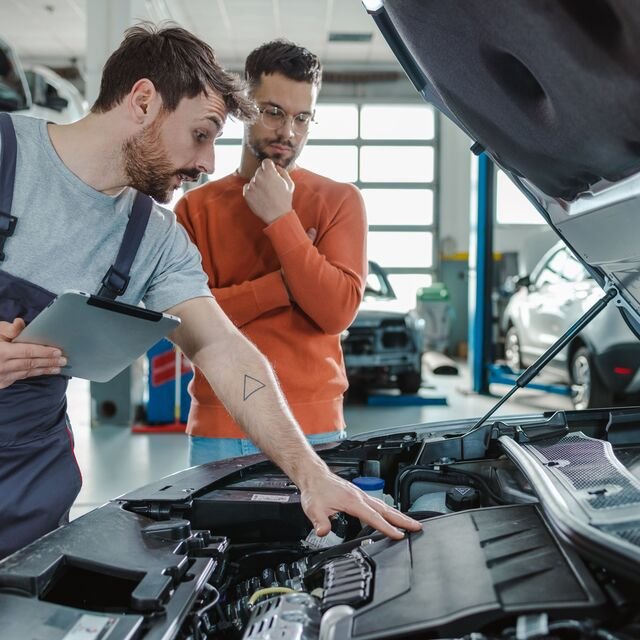
Routine auto maintenance is essential to keep your vehicle running smoothly, extend its lifespan, and prevent costly repairs. Here’s a checklist of key maintenance tasks and their recommended intervals:
1. Regular Monthly Checks
-
Tire Pressure & Condition – Check pressure (including spare) and look for wear or damage.
-
Fluid Levels – Engine oil, coolant, brake fluid, power steering fluid, and windshield washer fluid.
-
Lights – Test headlights, brake lights, turn signals, and interior lights.
-
Windshield Wipers – Inspect for wear and replace if streaking.
2. Every 3,000–5,000 Miles (or 3–6 Months)
-
Oil & Filter Change – Conventional oil every 3,000–5,000 miles; synthetic every 5,000–7,500 miles.
-
Tire Rotation – Promotes even tire wear (every 5,000–7,500 miles).
-
Check Brakes – Inspect pads, rotors, and fluid levels.
3. Every 15,000–30,000 Miles (or 12–24 Months)
-
Air Filter Replacement – Improves engine efficiency.
-
Cabin Air Filter – Ensures clean airflow inside the car.
-
Fuel System Cleaning – Helps maintain engine performance.
-
Battery Inspection – Check terminals for corrosion and test charge.
4. Every 30,000–60,000 Miles (or 2–5 Years)
-
Transmission Fluid – Drain and refill (varies by vehicle).
-
Coolant Flush – Prevents overheating and corrosion.
-
Spark Plugs – Replace (check manufacturer’s recommendation).
-
Brake Fluid Flush – Maintains braking performance.
-
Differential Fluid – Replace (for AWD/4WD vehicles).
5. Every 60,000–100,000+ Miles
-
Timing Belt – Replace (if applicable, usually 60,000–100,000 miles).
-
Serpentine Belt – Inspect and replace if cracked.
-
Suspension Check – Shocks, struts, and bushings.
-
Fuel Pump & Filter – Replace if experiencing fuel delivery issues.
Seasonal Maintenance
-
Winter Prep – Check antifreeze, battery, tires (consider snow tires).
-
Summer Prep – Inspect A/C, cooling system, and tire pressure.
Additional Tips
-
Keep records of all maintenance for resale value.
-
Follow your vehicle’s owner’s manual for specific intervals.
-
Address unusual noises, warning lights, or performance issues immediately.
By staying on top of routine maintenance, you’ll improve safety, reliability, and fuel efficiency while avoiding major breakdowns.
